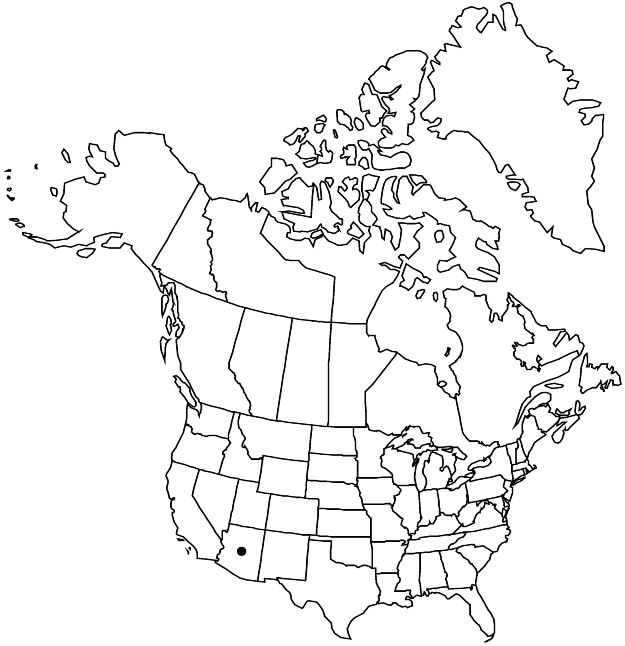Mentzelia canyonensis
W. C. Hodgson & L. Hufford, Brittonia 65: 410, figs. 1,2. 2013.
Plants perennial, bushlike, with subterranean caudices or rhizomes. Stems multiple, erect or decumbent, zigzag; branches along entire stem, all ± equal, antrorse, upcurved; hairy. Leaves: blade 16–31 × 3.9–9.2 mm, widest intersinus distance 3–-8.3 mm; proximal oblanceolate to elliptic, margins entire or dentate, teeth 0–4 (–6), perpendicular to leaf axis, 0.2–1.3 mm; distal oblanceolate to elliptic, base not clasping, margins entire or dentate, teeth 0–4, perpendicular to leaf axis, 0.4–2 mm; abaxial surface with simple grappling-hook (occasionally absent) and complex grappling-hook trichomes, adaxial surface with complex grappling-hook and needlelike trichomes. Bracts: margins entire. Flowers: petals white, 9–15 × 1.8–2.4 mm, apex rounded to acute, glabrous abaxially; stamens white, 5 outermost petaloid, filaments narrowly spatulate, slightly clawed, 7.1–13 × 0.5–1.4 mm, with anthers, second whorl with anthers; anthers twisted or straight after dehiscence, epidermis papillate; styles 4.8–-7.3 mm. Capsules cupshaped, 4.5–8 (–13) × 4.5–7 mm, base rounded, not longitudinally ridged. Seeds: coat anticlinal cell-walls straight, papillae usually 6–9 per cell.
Phenology: Flowering May–Nov.
Habitat: Loose, rocky soils primarily on steep, degraded slopes, less frequently on stream bottoms, Muav limestones and Bright Angel shales.
Elevation: 800–1600 m.
Discussion
Mentzelia canyonensis is known only from the Grand Canyon and Little Colorado River canyon in Coconino County.
Selected References
None.
Lower Taxa
No values specified."not elongating" is not a number.
